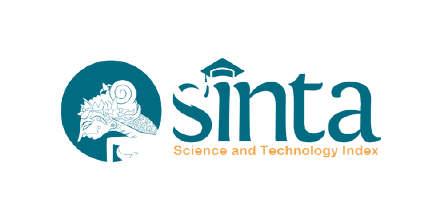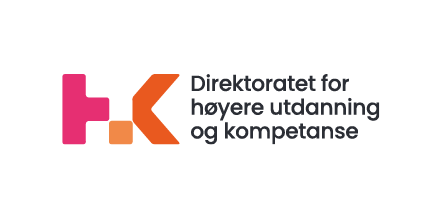Family Protective Factors as the Basis for Helping Children With Special Needs Increasing Resilience
DOI:
https://doi.org/10.21776/ub.ijds.2017.4.2.7Keywords:
Resilience, Children with Special Needs, Family Protective FactorsAbstract
The number of children with special needs which tend to increase have not been followed by the enhancement on people's knowledge and understanding on their developmental characteristics. Discrimination upon these children come not only from other people in their environment but also often from their own families. In this stressful situation, they are possibly having a lot of difficulties in following educational program and enhancing their academic, social and other life skills. The important aspect that makes some of them adaptive in facing adversity or stressful condition is resilience. The aim of this study was describing family protective factors that can be used as the basis for helping children with special needs increasing their resilience. This study used qualitative approach. Participants consist of four families that have child with special needs. All of those families reside in Surabaya. Data were collected through interview with each family member, observation with general guidance and field notes. Thematic analysis was used as data analysis technique. Eight protective factors found as the result of this study: (1) Family independence; (2) Patience and sincerity in experiencing the problems; (3) The persistence; (4) Positive communication; (5) Togetherness and support among family member; (6) Other social support; (7) Activeness in accessing information and openness to situational changes; (8) Similarity positive respond between parents. The paper concludes with a discussion of these findings, as well as explanation about steps that can be taken by parents in strengthening the protective factors, which will support childrens with special needs to increase their resilience.
References
Adioetomo, S.M., Mont, D., and Irwanto. (2014). Person with disabilities in Indonesia: Empirical facts and implicationsfor social protection policies. Jakarta: Lembaga Demografi Fakultas Ekonomi Universitas Indonesia.
Anak berkebutuhan khusus masih mengalami diskriminasi. (2011, 30 April). Pikiran Rakyat (online). http://www.pikiran-rakyat.com/jawa-barat/2011/04/30/143494/anak-berkebutuhan-khusus-masih-mengalami-diskriminasi.
Anak berkebutuhan khusus masih alami diskriminasi. (2012, 23 April). Tempo (online). https://m.tempo.co/read/news/2012/04/23/079399113/anak-kebutuhan-khusus-masih-alami-diskriminasi.
Braun, V. & Clarke, V. (2006). Using thematic analysis in psychology. Qualitative Research in Psychology, 3, 77-101.
Cole, K.A., Clark, J.A., and Gable, S. (2001). Promoting family strength. Human Environmental Science Extension, MU Extension, University of Missouri – Columbia.
Duncan, J., Bowden, C., and Smith, A.B. (2005). Reviewing and rethinking parent support and parent education opportunities in New Zealand. New Zealand Annual Review of Education, 14, 153-170.
Gianzero, G. (1999). Promoting parental involvement, improving children outcomes. San Diego Dialogue, January 1999.
Groce, N. E. (2004). Adolescents and youth with disabilities: Issues and challenges. Asia Pacific Disability Rehabilitation Journal, 15(2), 13–32.
Hardman, M.L., Drew, C.J., and Egan, M.W. (2002). Human exceptionality. Boston: Allyn and Bacon, A Pearson Education Company.
Hart, A., Heaver, B., Brunnberg, E., Sandberg, A., Macpherson, H., Coombe, S., and Kourkoutas, E. (2014). Resilience-building with disabled children and young people: A review and critique of the academic evidence base. International Journal of Child, Youth, and Family Studies, 2014, 5(3): 394-422.
Hendriani, W. (2006). Penerimaan keluarga terhadap individu yang mengalami keterbelakangan mental. Research report. Surabaya: Fakultas Psikologi Universitas Airlangga.
Hosseinpoor, A. R., Stewart Williams, J. A., Gautam, J., Posarac, A., Officer, A., Verdes, E., et al. (2013). Socioeconomic inequality in disability among adults: A multicountry study using the world health survey. American Journal of Public Health, 103(7), 1278– 1286. doi:10.2105/AJPH.2012.301115.
Hunt, N. and Marshall, K. (2005). Exceptional children and youth. Boston: Houghton Mifflin Company.
Kalil, A. (2003). Family resilience and good child outcomes. Wellington: Centre for Social Research and Evaluation, Ministry of Social Development, Te Manatu Whakahiato Ora.
Luthar, S.S., Cicchetti, D. and Becker, B. (2000). The construct of resilience: A critical evaluation and guidelines for future work. Child Development, 71: 543-62, 2000.
Masten, A. S. (2011). Resilience in children threatened by extreme adversity: Frameworks for research, practice, and translational synergy. Development and Psychopathology, 23(2), 493–506. doi:10.1017/S0954579411000198.
Positive thinking: Reduce stress by eliminating negative self talk. (2012). www.mayoclinic.com.
National Network for Family Resiliency. (1995). Family resiliency: Building strengths to meet life’s challenges. Iowa: State University Extension.
Olson, D.H. and DeFrain, J. (2003). Marriage and families. Boston: McGraw-Hill.
Penyandang disabilitas masih mengalami diskriminasi. (2015, 3 December). https://ugm.ac.id/id/berita/10799-penyandang.disabilitas.masih.mengalami.diskriminasi.
Rutter, M. (2006). Implications of resilience concepts for scientific understanding. Annals of the New York Academy of Sciences, 1094, 1–12. doi:10.1196/annals.1376.002
Santrock, J.W. (2002). Life-span development: Perkembangan masa hidup (terjemahan). 2nd Edition. Jakarta: Penerbit Erlangga.
Ungar, M. (Ed.). (2012). The social ecology of resilience: A handbook of theory and practice. New York: Springer.
VanBreda, A.D. (2001). Resilience theory: A literature review. Pretoria: South African Military Health Service, Military Psychological Institute, Social Work Research and Development.
Downloads
Published
How to Cite
License
Copyright (c) 2017 Wiwin Hendriani

This work is licensed under a Creative Commons Attribution-NonCommercial 4.0 International License.















